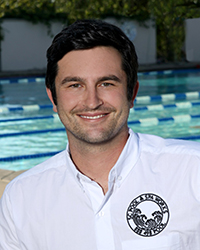By Max Koby
Recreational water features, namely pools and spas, are often near the top of a guest’s preferred amenities. Water not only brings serenity and beauty to a facility, but pools and spas can also be a source of exercise, family fun and more. For decades, hotels with recreational water have needed to commit costly staff hours to monitoring and managing water quality to ensure guest satisfaction and safety. The good news for hotels is that recent innovations in technology have enabled sophisticated automated systems to take over many aspects of monitoring and water treatment, including round-the-clock remote monitoring of water levels and chemical usage, ultimately improving efficiency.
Maintaining proper chemical levels is essential in preventing water-borne illnesses in guests, which can range in severity from irritating skin rashes to, in the case of Legionnaires’ disease, a potentially fatal illness. Moreover, imbalanced water can lead to the degradation of equipment and structures. It is not your imagination, pools are being resurfaced and equipment replaced more regularly, with the primary culprit being the poor management of water chemistry. For years, the hospitality industry has managed water through basic chemical automation controllers and manual processes. For example, many brands have a safety standard of testing the water three times a day. However, because the number of people who use a hotel’s recreational water feature can vary wildly from day-to-day or even hour-by-hour, water levels can fluctuate outside the expected parameters very quickly. Moreover, many of the current chemical control systems require constant calibration and the cleaning of probes. As a result, it becomes a balancing act, with hotel staff estimating how much of a given chemical needs to be added and then analyzing additional samples hours later to find out if they got it right. If the amount of sanitizing chemicals in the water falls too low, the water can become unsafe, and if it spikes too high, the water can become irritating to the skin and eyes.
In contrast, recent developments have led to a new paradigm for water management with three core components creating a new “smart platform. First, the latest generation of controllers are more robust and can track true chemical levels. New companies have entered the market that have adapted controllers from more industrial markets (i.e., cooling towers, food and beverage processing, etc.) and have improved the overall performance and durability of aquatic-based systems. Second, controller companies are partnering with network providers to bring the data (i.e., chorine levels, ph levels, water usage, temperature, etc.) into the cloud through wifi / 4G networks. Third, companies are using the latest generation controllers in combination with the new network infrastructure to provide 24/7 remote monitoring services through web-based management platforms.
Hotels and resorts are finding significant benefits in this new approach to water management. Rather than finding a pool cloudy or green, or having a guest complain of illness or bleached bathing suit, these automation and monitoring services allow properties to proactively identify issues before they impact guest satisfaction and safety. Additionally, these systems minimize the costs and labor associated with manual processes for water management and allows staff to monitor and identify potential problems up front to perform preventative measures instead of dealing with the time and expense of managing more significant problems once they’ve already taken root. Moreover, smart automation also creates major savings on the cost of pool maintenance. By measuring the the direct and indirect costs, operators will have baseline benchmarks (i.e., chemical usage, water usage, and energy usage to) manage against. Many operators are finding they can reduce chemical usage by 20% and water by 10-20% through automation. Moreover, energy costs can be decreased by over 40%.
By implementing an automated system hotels are able to not only ensure customer safety and satisfaction, but they can also reap significant cost savings. That doesn’t factor in the peace of mind that hotel management can enjoy knowing that their recreational water facilities are being properly handled, and in the case of any guest incidents, they will have detailed records to fall back on as the readings are recorded when they are taken. All told, given that automation generally pays for itself within approximately 15 months there’s little reason for hotels not to at least investigate whether it makes sense for their business.


